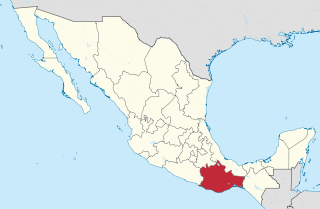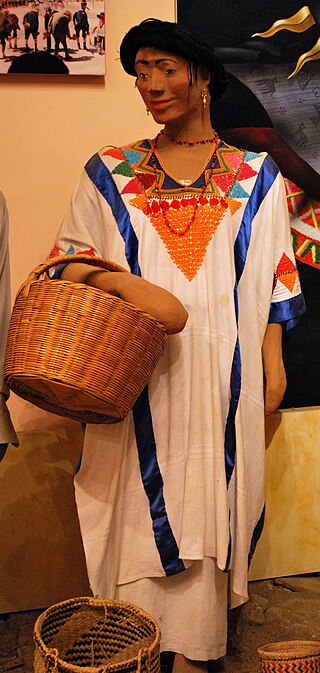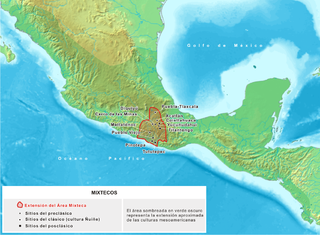
With a population of about 129 million in 2022, Mexico is the 10th most populated country in the world. It is the largest Spanish-speaking country in the world and the third-most populous country in the Americas after the United States and Brazil. Throughout most of the 20th century Mexico's population was characterized by rapid growth. Although this tendency has been reversed and average annual population growth over the last five years was less than 1%, the demographic transition is still in progress; Mexico still has a large youth cohort. The most populous city in the country is the capital, Mexico City, with a population of 8.9 million (2016), and its metropolitan area is also the most populated with 20.1 million (2010). Approximately 50% of the population lives in one of the 55 large metropolitan areas in the country. In total, about 78.84% of the population of the country lives in urban areas, and only about 21.16% in rural ones.

Oaxaca, officially the Free and Sovereign State of Oaxaca, is one of the 32 states that compose the Federative Entities of the United Mexican States. It is divided into 570 municipalities, of which 418 are governed by the system of usos y costumbres with recognized local forms of self-governance. Its capital city is Oaxaca de Juárez.

Mestizo is a person of mixed European and Indigenous non-European ancestry in the former Spanish Empire. In certain regions such as Latin America, it may also refer to people who are culturally European even though their ancestors are Indigenous. The term was used as an ethno-racial exonym for mixed-race castas that evolved during the Spanish Empire. It was a formal label for individuals in official documents, such as censuses, parish registers, Inquisition trials, and others. Priests and royal officials might have classified persons as mestizos, but individuals also used the term in self-identification.

The Mixtecs, or Mixtecos, are Indigenous Mesoamerican peoples of Mexico inhabiting the region known as La Mixteca of Oaxaca and Puebla as well as La Montaña Region and Costa Chica Regions of the state of Guerrero. The Mixtec culture was the main Mixtec civilization, which lasted from around 1500 BC until being conquered by the Spanish in 1523.

Zambo or Sambu is a racial term historically used in the Spanish Empire to refer to people of mixed Amerindian and African ancestry. Occasionally in the 21st century, the term is used in the Americas to refer to persons who are of mixed African and Indigenous American ancestry.

Mexicans are the citizens and nationals of the United Mexican States.The most spoken language by Mexicans is Spanish, but many also speak languages from 68 different Indigenous linguistic groups and other languages brought to Mexico by recent immigration or learned by Mexican expatriates residing in other countries. In 2015, 21.5% of Mexico's population self-identified as having indigenous ancestry, however this also included partially indigenous Mexicans. In 2020, the number was estimated at 11.8 million There are currently about 12 million Mexican nationals residing outside Mexico, with about 11.7 million living in the United States. The larger Mexican diaspora can also include individuals that trace ancestry to Mexico and self-identify as Mexican but are not necessarily Mexican by citizenship. The United States has the largest Mexican population in the world after Mexico at 37,186,361 in 2019.
Mixtec transnational migration is the phenomenon in which Mixtec people have migrated between Mexico and the United States for over three generations.
The Ladino people are a mix of mestizo or Hispanicized peoples in Latin America, principally in Central America. The demonym Ladino is a Spanish word that is related to Latino. Ladino is an exonym initially used during the colonial era to refer to those Spanish-speakers who were not Peninsulares, Criollos or indigenous peoples.

The Mixtec languages belong to the Mixtecan group of the Oto-Manguean language family. Mixtec is spoken in Mexico and is closely related to Trique and Cuicatec. The varieties of Mixtec are spoken by over half a million people. Identifying how many Mixtec languages there are in this complex dialect continuum poses challenges at the level of linguistic theory. Depending on the criteria for distinguishing dialects from languages, there may be as few as a dozen or as many as fifty-three Mixtec languages.

Chileans are an ethnic group and nation native to the country of Chile and its neighboring insular territories. Most Chileans share a common culture, history, ancestry and language. The overwhelming majority of Chileans are the product of varying degrees of admixture between European ethnic groups with peoples indigenous to Chile's modern territory. Chile is a multilingual and multicultural society, but an overwhelming majority of Chileans have Spanish as their first language and either are Christians or have a Christian cultural background.

Pelota mixteca is a team sport similar to a net-less tennis game. The players wear sturdy, elaborately decorated gloves affixed to a heavy flat striking surface, using them to strike a small solid ball. The game has roots extending back hundreds, or perhaps thousands, of years.
White Mexicans are individuals in Mexico who identify as white, often due to their physical appearance or their recognition of European ancestry. The Mexican government conducts ethnic censuses that allow individuals to identify as "White," but the specific results of these censuses are not made public. Instead, the government releases data on the percentage of "light-skinned Mexicans" in the country, with 12.5% of Mexican people surveyed choosing the three lightest shades in 2017. Using the same skin tone categories, a 2022 survey found that 10.2% chose the three lightest shades. The term "Light-skinned Mexican" is preferred by both the government and media to describe individuals in Mexico who possess European physical traits when discussing ethno-racial dynamics. However, "White Mexican" is still used at times.
San Juan Achiutla is a town and municipality in Oaxaca in south-western Mexico. The municipality covers an area of 49.76 km2. It is located in a mountain range, between the hills Negro to the East, Yucuquise to the Northwest, Cuate to the North and Totolote to the South. It is crossed by the river Los Sabinos and has a dam called Cahuayande. Its weather is temperate. It is in the Mixteca Alta, one of the three parties that make up the Mixteca region and in the Mixteca Alta is part of what was Achiutla, the significant Prehispanic place.

The Indigenous people of Oaxaca are descendants of the inhabitants of what is now the state of Oaxaca, Mexico, who were present before the Spanish invasion. Several cultures flourished in the ancient region of Oaxaca from as far back as 2000 BC, of whom the Zapotecs and Mixtecs were perhaps the most advanced, with complex social organization and sophisticated arts.

The state of Oaxaca, Mexico has a total population of about 3.5 million, with women outnumbering men by 150,000 and about 60% of the population under the age of 30. It is ranked tenth in population in the country. Fifty three percent of the population lives in rural areas. Most of the state’s population growth took place between 1980 and 1990. Life expectancy is 71.7 for men and 77.4 for women, just under the national average. Births far outpace deaths. In 2007, there were 122,579 births and 19,439 deaths. Approximately 85% profess the Catholic faith.

There is no single system of races or ethnicities that covers all modern Latin America, and usage of labels may vary substantially.
In Mexico, the term mestizo refers to an identity of those of mixed European and Indigenous Mexican descent. Some believe it can be defined by criteria ranging from ideological and cultural to self-identification, genetic ancestry, or physical appearance. According to these criteria, estimates of the number of mestizos in Mexico vary from about 40 percent of the population to over 90% who do not belong to the country's culturally indigenous minorities. A survey done by Latinobarometro in 2018 found that around 58% of Mexicans self-identify as mestizos when asked about their race, and another survey by Cohesión Social found that over 70% of Mexicans identified as mixed-race. Some genetic studies have claimed that mestizos make up over 93% of Mexico's present-day population, but this is disputed, with many Mexicans, including those of mixed ancestry, identifying more with static racial labels such as "white" or "indigenous" rather than mestizo, and a large number simply identifying as "Mexican," rejecting racialized labels.
Pasatono Orquesta (Orchestra) is an eight-member ensemble of ethnomusicologists dedicated to rescuing and performing traditional Oaxacan music, especially that of the Mixtec region, and to promote it by adding more modern arrangements and influences. It was founded by three Oaxacan students at the Escuela Nacional de Música in Mexico City, who found that their traditional music was not taught at the school. They have been promoted by Lila Downs, have released four albums, and have toured the United States, playing in venues such as Lincoln Center in New York and Kennedy Center in Washington D.C. In Mexico, they have played in venues in Mexico City and Oaxaca, as well as the Festival Internacional Cervantino.

The Mixtec culture was a pre-hispanic archaeological culture, corresponding to the ancestors of the Mixtec people; they called themselves ñuu Savi, which means "people or nation of the rain". It had its first manifestations in the Mesoamerican Middle Preclassic period and ended with the Spanish conquest in the first decades of the 16th century. The historical territory of this people is the area known as La Mixteca, a mountainous region located between the current Mexican states of Puebla, Oaxaca, and Guerrero.
The Binational Front of Indigenous Organizations, formerly known as the Binational Front of Mixteco-Zapotec, emerged at the end of 1991 in Los Angeles, California. The FIOB was founded off of six Oaxacan migrant organizations – the Mixtec Popular Civic Committee, the Organization of the Exploited and Oppressed People, Committee from Tlacolula in Los Angeles, Organization Pro-Support for Macuiltianguis, Benito Juárez Civic Association, and the Regional Organization from Oaxaca. The organization stands as the most politically active indigenous migrant group in California in cities such as Los Angeles, Fresno, and Santa Maria alongside an office in Juxtlahuaca, Oaxaca.













